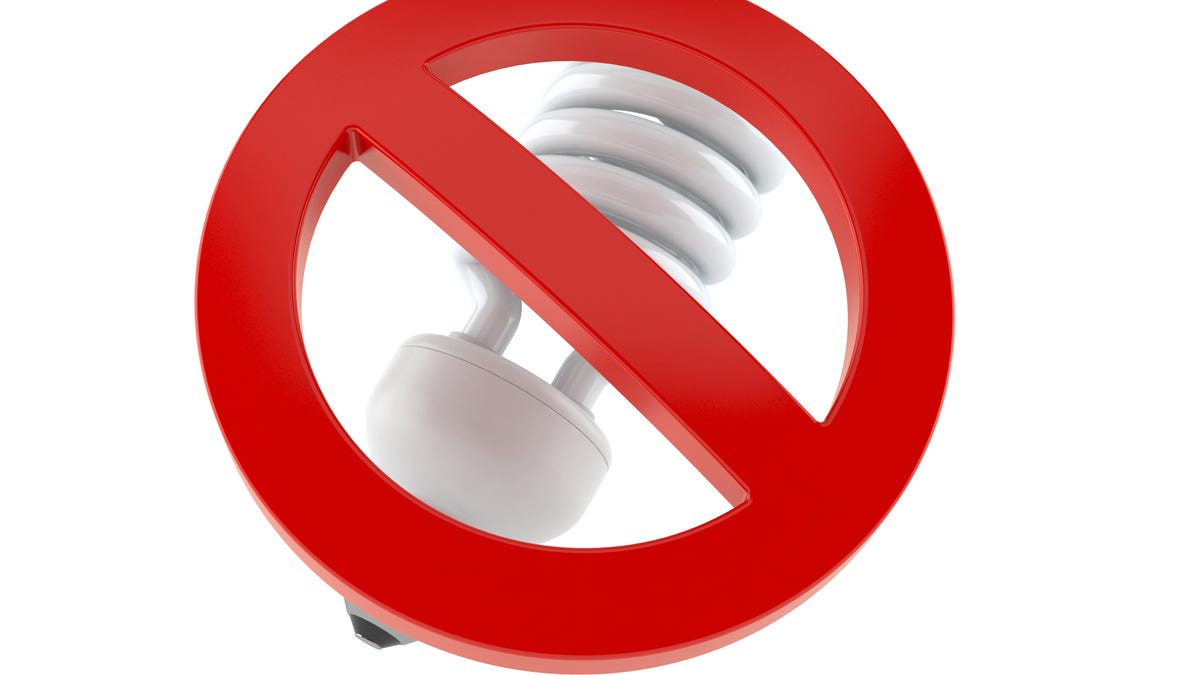 Why You Can Trust CNET
Why You Can Trust CNET Are Compact Fluorescent Lightbulbs Being Banned?
The White House is looking to phase out CFLs by 2025. But some states aren't waiting that long.

Vermont and California have already passed bans on CFLs, and many other states have introduced similar legislation.
With the sale of incandescent lightbulbs effectively banned in the US, compact fluorescent lightbulbs, or CFLs, are next on the chopping block: In December 2022, the Biden administration proposed regulations that would phase out CFLs as part of its larger climate change strategy.
CFLs last much longer than traditional incandescents but still require more electricity than light-emitting diode bulbs, or LEDs.
Read on: What to Know About the Ban on Incandescent Lightbulbs
There are also trace amounts of mercury in CFLs that can pose a hazard if the bulbs aren't disposed of properly.
Here's what you need to know about CFLs, including how they work, why they're being regulated and what will take their place.
For more on lighting, here's everything you need to know about LED lightbulbs and the best LEDs for every room in your house.
What are compact fluorescent lightbulbs?
CFLs provide illumination by way of an electric current sent through a tube filled with argon and a small amount of mercury. That current generates an invisible ultraviolet light that stimulates a fluorescent coating inside the tube, producing visible light.
While CFLs are more expensive than incandescent bulbs, they use 75% less energy and last 10 to 15 times longer.
According to the US Environmental Protection Agency, if every US household swapped just one traditional lightbulb for a CFL, the energy savings could light 3 million homes.
What is the downside to using CFLs?
Though CFLs use far less energy than incandescent bulbs, they aren't as efficient as LEDs, which work by passing a current through a microchip and illuminating a tiny light source, or diode, to produce visible light.
Most CFLs generate between 50 and 70 lumens per watt (a lumen is a measure of brightness), while LEDs typically produce 75 to 110 lumens per watt. And a good-quality LED, especially an Energy Star-certified bulb, can last three to five times longer than a CFL.
CFL bulbs also contain about 4 milligrams of mercury. That's a lot less than the 500 milligrams found in an old-school thermometer, but if your CFL bulb breaks, the EPA recommends airing out the room and carefully collecting the pieces. In many states, broken or burned-out CFLs can't be thrown out in the trash: They must be brought to a collection site or recycling center.
Most CFL bulbs can't be dimmed, and they aren't efficient with recessed lighting or under extreme temperatures.
Are CFLs banned?
Not yet, but they may be soon. In 2022, the US Department of Energy proposed guidelines that would more than double minimum lightbulb efficiency standards, from 45 lumens per watt to more than 120.
That would effectively end the sale of CFLs, which generally max out at 70 lumens per watt, and accelerate the "increasing shift in the marketplace toward LED lighting," White House National Climate Advisor Ali Zaidi told CNN, with benefits to both consumers and the environment.
The regulations, which haven't yet been finalized, could take effect as early as the end of 2024.
Which states have already banned CFLs?
Vermont's ban on the sale of compact fluorescent lightbulbs took effect in February 2023. The state's Department of Environmental Conservation actually outlawed them in February 2022 but gave retailers a year to sell off their inventories. The agency said it's working with manufacturers to maintain funding for CFL disposal programs, "as this waste will continue to be produced for years to come."
Next year, Vermont will also start restricting the sale of tube-style linear fluorescent lamps, or LFLs, which also contain mercury.
A ban on CFLs in California is scheduled to take effect on Jan. 1, 2024, with a ban on LFLs set to start in 2025.
Lawmakers in Colorado, Hawaii, Illinois, Maine, Maryland, Massachusetts, Nevada, New Mexico, Oregon, Rhode Island and Washington state are also considering CFL bans, according to the nonprofit Environment America.

